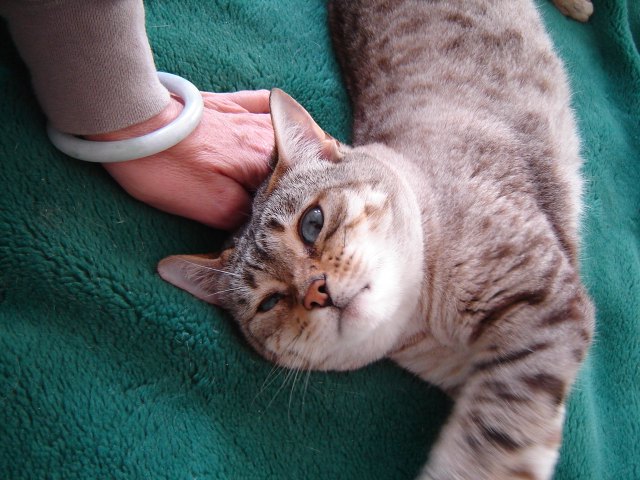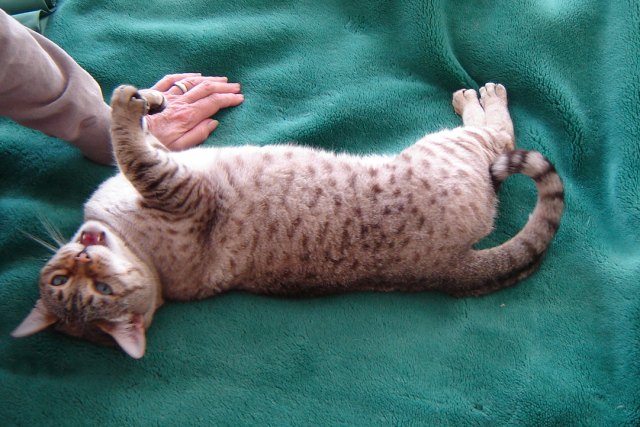



Cal Earth
teaches people simple ways to make
beautiful,
cheap, practical, safe housing out of dirt, sandbags and
a bit of stucco. I've visited their place near Riverside, and it's
really quite inspiring.
September 4, 2007
Some environmentalists are saying the fires in Greece
(see my August 27th
entry) are an effect of global warming and a harbinger of
desertification to come:
He also described Geoffrey Chew's Rochester conference talk on the analytic S-matrix, given at the height of the bootstrap theory fad. Wightman asked Chew: why assume from the start that the S-matrix was analytic? Why not try to derive it from simpler principles? Chew replied that "everything in physics is smooth". Wightman asked about smooth functions that aren't analytic. Chew thought a moment and replied that there weren't any.
(Now all mathematicians reading this are chortling in amusement at Chew's folly, while everyone else is scratching their head. The first point is that Wightman succeeded in deriving the analyticity of the S-matrix from simpler principles. The second point is that any good mathematician — but not necessarily every physicist, like Chew — will know examples of smooth functions that aren't analytic.)
Streater is retired, but he has just come out with a new book
called Lost Causes in and beyond Physics. You can see some
of his lost causes online. I don't mind him calling octonions a lost cause,
despite my fondness for them. But,
I wish he'd spell them right!
September 5, 2007
Here's an interesting article on Titan Rain, a series of attacks on US government computers
which appear to be Chinese in origin:
The minister of defense checked the Web page again — still nothing. He stared at the error message: For some reason, the site for Estonia's leading newspaper, the Postimees, wasn't responding. Jaak Aaviksoo attempted to pull up the sites of a couple of other papers. They were all down. The former director of the University of Tartu Institute of Experimental Physics and Technology had been the Estonian defense minister for only four weeks. He hadn't even changed the art on the walls.An aide rushed in with a report. It wasn't just the newspapers. The leading bank was under siege. Government communications were going down. An enemy had invaded and was assaulting dozens of targets.
Outside, everything was quiet. The border guards had reported no incursions, and Estonian airspace had not been violated. The aide explained what was going on: They were under attack by a rogue computer network.
Or, if you prefer some math, watch a sphere turn inside out.
On a lark, Nadja Kutz came by to talk a bit. She reads the
n-Category Café and has been visiting London
lately; I guess she read that I was in Greenwich.
She used to work on completely integrable systems. Now she and her husband do netart. They
have an online gallery.
September 8, 2007
I discovered today that I'd lost my wallet, perhaps the day before yesterday.
I lost my credit card, bank card, driver's license, a horde of lesser cards,
about 80 pounds and about 300 euros. Why hadn't I put those
euros somewhere else? I'd been so proud of saving them from my stay
in Vienna. And I'd just had a new bank card fedexed from the US
(the old one had expired). How could I such an idiot to lose my
wallet? Am I going senile this fast?
Many rounds of self-castigation...
Luckily I have some old traveller's checks, and with the help
of Lisa I'll surely survive my last couple weeks abroad.
A new credit card should arrive here in 5 business days.
September 9, 2007
Today I'm taking a train up to Sheffield to attend the 22nd
British
Topology Meeting. It starts tomorrow, and then I'll give
my talk on higher gauge theory and the string
group. But tonight, with any luck, I'll meet Bruce Bartlett,
Eugenia Cheng, Tom Leinster and Simon Willerton — friends
who work on n-categories and related stuff. The plan is to
meet at the Fox and Duck and then have dinner at Café Thyme.
The widespread production of plastic is new enough that we haven't seen all the side-effects yet. You've probably read about sea turtles choking on plastic junk, but that could be the tip of the iceberg. Alan Weisman has written a book which — perhaps in some fit of wishful thinking, I don't know — imagines what the future of the Earth might be like without humans:
Here's something I hadn't heard about before:
Thompson's team realized that slow mechanical action — waves and tides that grind against shorelines, turning rocks into beaches — were now doing the same to plastics. The largest, most conspicuous items bobbing in the surf were slowly getting smaller. At the same time, there was no sign that any of the plastic was biodegrading, even when reduced to tiny fragments.I'm not convinced that tiny plastic granules will kill off the little sea creatures of the world — these guys already have to contend with silt. Are tiny granules of plastic worse than tiny granules of silica?"We imagined it was being ground down smaller and smaller, into a kind of powder. And we realized that smaller and smaller could lead to bigger and bigger problems."
He knew the terrible tales of sea otters choking on polyethylene rings from beer six-packs; of swans and gulls strangled by nylon nets and fishing lines; of a green sea turtle in Hawaii dead with a pocket comb, a foot of nylon rope, and a toy truck wheel lodged in its gut. His personal worst was a study on fulmar carcasses washed ashore on North Sea coastlines. Ninety-five percent had plastic in their stomachs — an average of 44 pieces per bird. A proportional amount in a human being would weigh nearly five pounds.
There was no way of knowing if the plastic had killed them, although it was a safe bet that, in many, chunks of indigestible plastic had blocked their intestines. Thompson reasoned that if larger plastic pieces were breaking down into smaller particles, smaller organisms would likely be consuming them. He devised an aquarium experiment, using bottom-feeding lugworms that live on organic sediments, barnacles that filter organic matter suspended in water, and sand fleas that eat beach detritus. In the experiment, plastic particles and fibers were provided in proportionately bite-size quantities. Each creature promptly ingested them.
When the particles lodged in their intestines, the resulting constipation was terminal. If they were small enough, they passed through the invertebrates' digestive tracts and emerged, seemingly harmlessly, out the other end. Did that mean that plastics were so stable that they weren't toxic? At what point would they start to naturally break down — and when they did, would they release some fearful chemicals that would endanger organisms sometime far in the future?
Richard Thompson didn't know. Nobody did, because plastics haven't been around long enough for us to know how long they'll last or what happens to them. His team had identified nine different kinds in the sea so far, varieties of acrylic, nylon, polyester, polyethylene, polypropylene, and polyvinyl chloride. All he knew was that soon everything alive would be eating them.
"When they get as small as powder, even zooplankton will swallow them."
Two sources of tiny plastic particles hadn't before occurred to Thompson. Plastic bags clog everything from sewer drains to the gullets of sea turtles who mistake them for jellyfish. Increasingly, purportedly biodegradable versions were available. Thompson's team tried them. Most turned out to be just a mixture of cellulose and polymers. After the cellulose starch broke down, thousands of clear, nearly invisible plastic particles remained.
Some bags were advertised to degrade in compost piles as heat generated by decaying organic garbage rises past 100°F. "Maybe they do. But that doesn't happen on a beach, or in salt water." He'd learned that after they tied plastic produce bags to moorings in Plymouth Harbor. "A year later you could still carry groceries in them."
Even more exasperating was what his Ph.D. student Mark Browne discovered while shopping in a pharmacy. Browne pulls open the top drawer of a laboratory cabinet. Inside is a feminine cornucopia of beauty aids: shower massage creams, body scrubs, and hand cleaners. Several are by boutique labels: Neova Body Smoother, SkinCeuticals Body Polish, and DDF Strawberry Almond Body Polish. Others are international name brands: Pond's Fresh Start, a tube of Colgate Icy Blast toothpaste, Neutrogena, Clearasil. Some are available in the United States, others only in the United Kingdom. But all have one thing in common.
"Exfoliants: little granules that massage you as you bathe." He selects a peach-colored tube of St. Ives Apricot Scrub; its label reads, 100% natural exfoliants. "This stuff is okay. The granules are actually chunks of ground-up jojoba seeds and walnut shells." Other natural brands use grape seeds, apricot hulls, coarse sugar, or sea salt. "The rest of them," he says, with a sweep of his hand, "have all gone to plastic."
On each, listed among the ingredients are "micro-fine polyethylene granules," or "polyethylene micro-spheres," or "polyethylene beads." Or just polyethylene.
"Can you believe it?" Richard Thompson demands of no one in particular, loud enough that faces bent over microscopes rise to look at him. "They're selling plastic meant to go right down the drain, into the sewers, into the rivers, right into the ocean. Bite-size pieces of plastic to be swallowed by little sea creatures."
Speaking of The World Without Us, some people are dreaming about restoring the ecosystem of North America to the way it was in the good old days: before people arrived.
Back then, there were many large mammals. I discussed them here last December. In the elephant department we had the American mastodon, the woolly mammoth, and Jefferson's mammoth. We also had giant beavers, giant ground sloths, the dire wolf, the giant short-faced bear, the Mexican horse, the western camel, and more.
All these North American "megafauna" went extinct shortly after people — the Clovis culture — crossed the Bering strait around 11,500 BC. According to the Pleistocene overkill hypothesis, the sudden arrival of skilled hunters spelled doom for these animals. Regardless of what killed them off, the American wilderness must have been reeling in shock ever since. Big herbivores and top predators have a huge effect on the rest of the environment.
But, there are some who dream of reintroducing substitutes for these extinct beasts! One of them is C. Josh Donlan, a biologist at Cornell University:
A little quote:
We foresee several phases to Pleistocene rewilding, some of which are already under way. The 50-kg Bolson tortoise (Gopherus flavomarginatus) was widely distributed across the Chihuahuan desert until the Late Pleistocene. Today it survives only in a small part of northern Mexico and is critically endangered. A number of appropriate sites exist for reintroduction, including Big Bend National Park, Texas. And repatriation of captive Bolson tortoises to a private ranch in New Mexico is currently under study. Restoring North America's largest surviving temperate terrestrial reptile to its prehistoric range could bring ecological, evolutionary, economic and cultural benefits, with no apparent costs.Lions? Yes! Besides the sabertooth, its smaller relative the scimitar cat, and the American cheetah, North America played host to a species of lion: Panthera leo atrox. It probably evolved from cave lions that entered Alaska from Siberia during the second to last ice age. Here's what we think it looked like:Likewise, horses and camels originated in North America, and many species were present in the Late Pleistocene. Feral horses (Equus caballus) and asses (E. asinus), widely viewed as pests in the United States, are plausible proxies for extinct American species. Also, given that most of the surviving Eurasian and African species are now critically endangered, establishing Asian asses (E. hemionus) and Przewalski's horse (E. przewalskii) in North America might help prevent the extinction of these endangered species and would restore equid species to their evolutionary homeland.
Similarly, Bactrian camels (Camelus bactrianus) in North America could provide a modern proxy for Camelops, a late Pleistocene camelid. Wild Bactrian camels are on the verge of extinction, currently restricted to the Gobi desert. Domesticated or captive camels might benefit arid North American ecosystems by browsing on woody plants that today often dominate southwestern US landscapes. With proper management, camels could provide economic benefits as well. The overall benefits and disadvantages of horses and camels as proxies will depend on local contexts, and possibly on the presence of appropriate predators.
The second, more controversial phase of Pleistocene re-wilding could also begin immediately, with the maintenance of small numbers of African cheetahs (Acinonyx jubatus), Asian (Elephas maximus) and African (Loxodonta africana) elephants, and lions (Panthera leo) on private property. Many of these animals are already in captivity in the United States, and the primary challenge will be to provide them with naturalistic settings, including large protected areas of appropriate habitat and, in the case of carnivores, live prey.
Of course, American ranchers are already complaining mightily about the reintroduction of wolves and bears! They'd probably like lions and elephants even less. And it's not just ranchers who don't want lions in their neighborhood — so Donlan's proposal has raised hackles in many quarters. Read the story here:
But, the re-wilders have a long, slow 50-year plan in mind. With the depletion of the Ogalalla aquifer:
large areas of the Great Plains may become hard to inhabit. The permanent drought people are predicting will only intensify this trend. So, some people are already dreaming of turning them into parks. Then some lions might not be so bad!
Donlan et al put it this way:
The third stage in our vision for Pleistocene re-wilding would entail one or more 'ecological history parks', covering vast areas of economically depressed parts of the Great Plains. As is the case today in Africa, perimeter fencing would limit the movements of otherwise freeliving ungulates, elephants and large carnivores, while surrounding towns would benefit economically from management and tourism-related jobs. A system of similar reserves across several continents offers the best hope for longterm survival of large mammals.
The importance of reintroducing big predators is clear from the case of the wolf. Stolzenburg writes:
The megafauna's most shining endorsement is now on public display in the dramatic greening of Yellowstone National Park under the reinstated reign of the gray wolf. For 70 years following the wolf's extermination from the park, Yellowstone's oases of aspens, cottonwoods, and willows had been browsed to stubs by the world's largest herd of elk. Within five years of the wolves. return in 1995, the elk were running scared and willows were sprouting three meters high. With the willows' return, the beaver followed — from one colony before wolf reintroduction to ten colonies at last count. With the new beaver ponds have come more fish and with the streamside groves more songbirds. The list of beneficiaries goes on, from ravens and grizzlies fattening on wolf leftovers to the encouraging number of surviving pronghorn fawns now that the lurking coyotes have been scattered by territorial wolves.
Other magazines have picked up on this "re-wilding" business:
From the latter:
A few years ago, a group of scientists conceived a "re-wilding" plan aimed at restoring North America's lost Pleistocene ecosystems. The purpose: to restore lost ecological processes and evolutionary potential as well as provide a safe haven for megafauna barely surviving in conflict-ridden, unstable or densely populated regions elsewhere. Since that time, much of the discussion about re-wilding has remained focused on North America. Meanwhile, other candidates for re-wilding have been largely overlooked, although there is a major effort underwayin Siberia to preserve and extend Pleistocene-like grasslands at northern latitudes as well as initiatives in Europe, the continent that may hold the greatest promise for bringing the Pleistocene back to life.For more, I'll need to read this book:In many ways, Europe is a more obvious candidate for re-wilding than North America. The reason: a large portion of species lost in the Americas do not have any close living relatives. Europe has also seen its share of extinctions, including the scimitar cat, cave bear, woolly mammoth, woolly rhinoceros, steppe rhinoceros and giant deer, but many of Europe's lost species still survive or have close wild or domestic relatives elsewhere in the world. Europe also has a historical advantage: The disappearance of its megafauna to a large extent occurred more recently than in North America, with many species persisting well into the Holocene.
Europe has already succeeded in reintroducing some previously extinct species. The bison, which was extinct in the wild in the early 20th century, has now been reestablished in scattered populations across eastern Europe. Small populations of musk ox that lived in Europe in cold climates until the late glacial period have been successfully reintroduced in Scandinavia's mountains. The fallow deer, the closest relative of the now extinct giant deer, survived marginally into Europe's Holocene, but persisted in Asia Minor. After several millennia of reintroductions, the animal now prospers in most European countries. The successful re-wilding of these species bodes well for larger scale projects.
But re-wilding initiatives in Europe must also include reinvigoration of megafauna populations already there that have suffered severe range constriction. Among them: the wolf, brown bear, lynx and moose. Scientists should also consider reintroducing 11 additional megafauna species: the Asiatic lion, leopard, spotted hyena, dhole, horse, cattle, Asiatic wild ass, Asiatic elephant, hippopotamus, water buffalo and hairy rhinoceros.
Back in 2005, members of a team led by Schuster and Miller were able to isolate and sequence 13 million base pairs of the nuclear DNA from a mammoth that had been frozen for 28,000 years. It'll probably be quite a while before we're in a position to clone mammoths, but people are definitely thinking about it.
Schuster and Miller have also sequenced a bunch of Neanderthal DNA, but there doesn't seem to be much interest in cloning Neanderthals yet.
On a related note, Elaine Ostrander has recently studied the DNA of lots of dogs and cats:
Wolf remains have been found in association with hominid remains as far back as 400,000 years ago. The precise time at which some wolves became domesticated "dogs" will probably be argued forever. Some people claim that it happened roughly around the end of the Pleistocene, between 17,000 and 10,000 years ago. I'm not sure what the evidence is, or even what definition of a dog is being used in these debates. Dogs can and still do interbreed with wolves and other canids, after all. One interesting possibility is that a canid counts as domestic when it will eat in the presence of humans.
Personally, not being at all expert on this subject, I suspect a much earlier date for domestication. There's some evidence that points to a time around 100,000 to 130,000 years ago.
Anyway, the above article by Ostrander argues that there are four general kinds of dogs, genetically speaking:
It's easy for me to imagine wolves being domesticated as soon as hominids started using fire to cook meat. The use of fire dates back to around 1.4 million years ago, long before Homo neanderthalensis showed up. Cats, on the other hand, seem to have befriended us only when the rise of agriculture led to stores of grain, which attracted rats! The earliest known evidence of domestic cats seems to be a grave excavated in Cyprus in 2004, which contained skeletons, laid close to one another, of both a human and a cat. This grave is estimated to be 9500 years old.
Cats may have only been domesticated a few times: a recent genetic analysis of almost 1,000 domestic cats and their wild progenitors has revealed that today's dometic cats descended from a few that lived in the Middle East around 9,000 years ago:

Julia is the woman who kindly let Lisa and me stay in her house in Greenwich this summer. She's quite a cat fancier, so she drove all the way to Wales with Lisa to pick up a very special kitty, a Bengal named Seren. The fascinating thing about Bengals is that they arise from crossing ordinary domestic cats with the leopard cat, Prionailurus bengalensis — a small wild cat found in southeast Asia.
It takes some work to make these hybrids tame, but
this particular one was very tame. I'm
afraid it's absurdly cute, too:
© 2007 John Baez 
For my October 2007 diary, go here.
Will you settle for an American wilderness emptier than it was just
100 centuries ago? - C. Josh Donlan
baez@math.removethis.ucr.andthis.edu
home